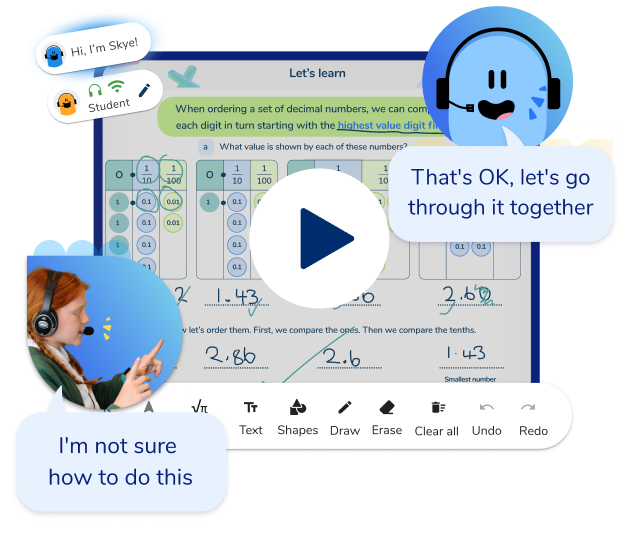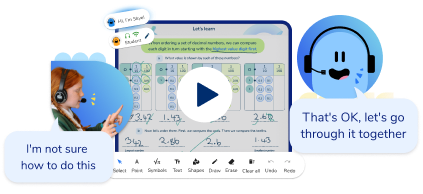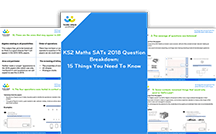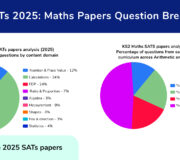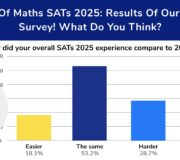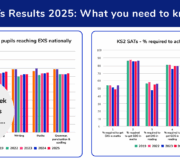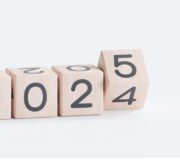KS2 SATs 2018: Maths Papers Question Breakdown
Originally published on 29th May 2018.
Now the KS2 SATs 2018 maths papers, answers and mark schemes have been released for Maths, here’s a quick question breakdown for Year 6 teachers regarding the content of the Arithmetic and Reasoning papers in 2018.
Working with our expert Maths consultants, here are the 15 lessons you should take from the KS2 SATs 2018 papers to help you plan your approach to Year 6 Maths for SATs 2024 and beyond.
1. Difficulty same as the past few years
Overall, the KS2 SATs 2018 maths papers were at the same level of difficulty as the previous years. Changes to the sequencing of questions made in 2017 to help ‘taper’ the paper and provide an ‘easier’ start were maintained in 2018.
The first questions in the papers carried a low score on the ‘cognitive domain’, which is one half of the way that SATs papers are put together. For those who may not know, the cognitive domain in essence says how simple the method of answering and presentation of the question is.
A classic example of this is Question 1 on Paper 3, where pupils were awarded a generous 2 marks for completing a simple sequence involving the 7 times table. This was probably one of the simplest starts to a Maths SAT paper we’ve seen in a while.

Although starting Paper 2 with a reflection question was a bit of a surprise for many, it was relatively simple to complete, and should have hopefully filled pupils with some confidence. Question 2 on Paper 2 continued the simple introduction to the paper, with the question only requiring basic knowledge of inverse operations.
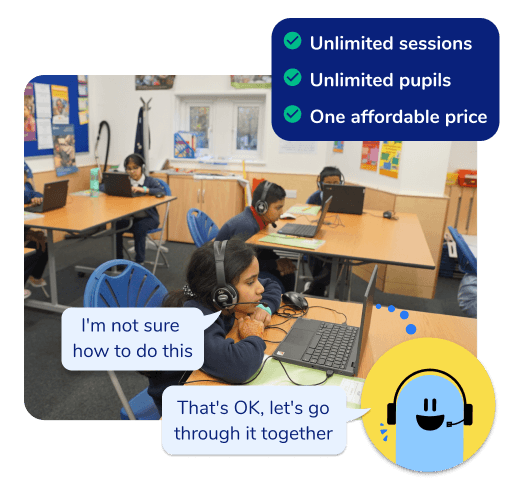
Unlimited primary maths tutoring with Skye, the voice-based AI maths tutor.
Built on the same principles, pedagogy and curriculum as our traditional tutoring, but with more flexibility, reach and lower cost.
Join the schools already helping hundreds of primary pupils nationwide with Skye’s one to one maths tutoring.
Watch Skye in action2. Question coverage was fairly balanced
Most areas of the KS2 Maths curriculum were covered, with all of the content domain ‘stands’ making an appearance.
As always, there were some omissions, which is simply due to the fact that the test writers can’t test everything in one year. This goes some way to explaining the lack of discrete angle questions, with angle coverage limited to the implicit angles in Paper 3, Question 6, as the measurement ‘construction’ marks were taken up by Paper 2, Question 3.
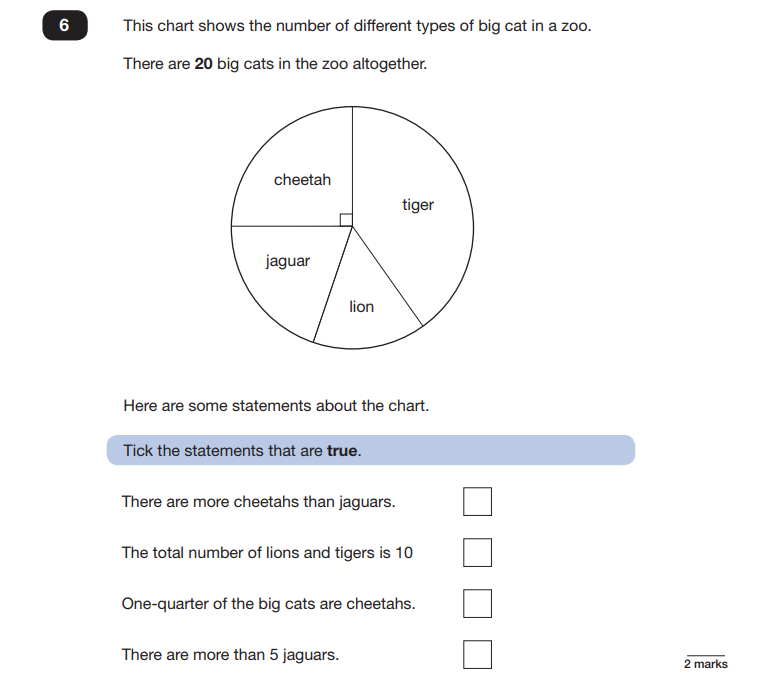

3. Some ‘themes’ tested in multiple questions
This reflects the fact that there were still some areas of the test framework had been tested less frequently in the SATs 2016 maths papers and in the SATs 2017 maths papers than others.
One very notable theme that was tested in the KS2 Sats 2018 was mixed numbers. These played a heavier role in the calculations paper than previously (with 4 questions involving mixed numbers), and also made a significant appearance in Paper 2 ( Q13, 19 and 23). This meant that 8 marks in total across the papers involved mixed numbers in some way, shape or form.

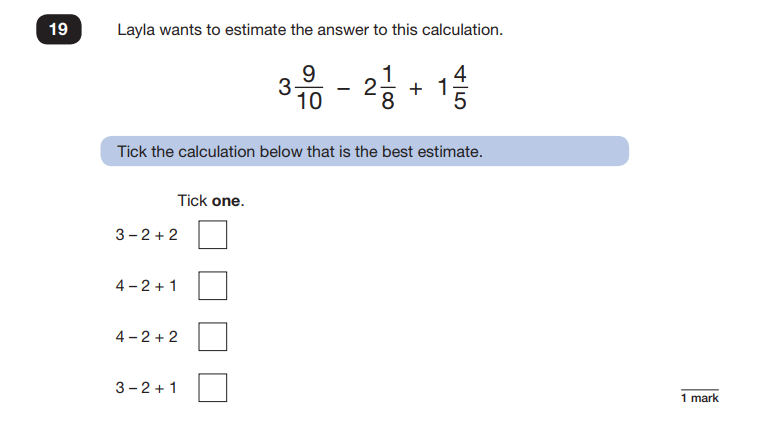
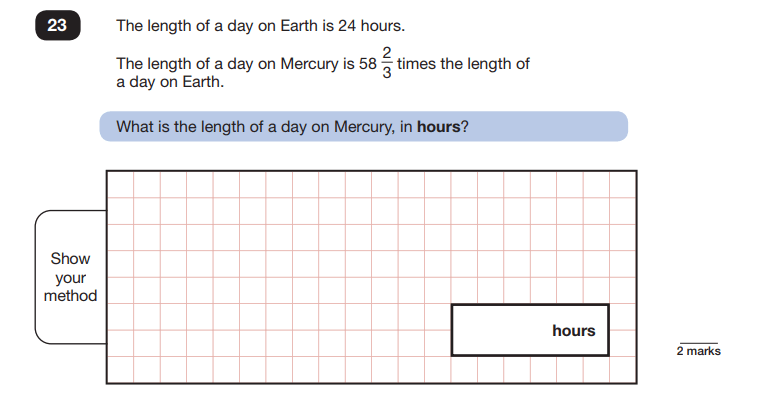

2018 SATs Question Breakdown - Teacher Resource
See the 15 lessons you should take from the 2018 KS2 SATs papers, including clues about what may come up in the 2019 papers to help you prepare for next year!
Download Free Now!
2018 SATs Question Breakdown - Teacher Resource
See the 15 lessons you should take from the 2018 KS2 SATs papers, including clues about what may come up in the 2019 papers to help you prepare for next year!
Download Free Now!4. SATs questions tested the four operations in context
As we have seen previously, questions in Papers 2 and 3 required pupils to identify the operation(s) needed in the context of the problem. Throughout Papers 2 and 3, pupils were required to add, subtract, multiply, divide as well as calculate with fractions and mixed numbers.
5. 2018 Maths KS2 SATs papers tested fluency
A lot of the questions across all 3 papers could be seen as testing ‘true’ numerical fluency – namely, that pupils can use and apply their number facts and connections between numbers. This is rather than them demonstrating ‘superficial’ fluency, which is pupils just being able to recall number facts and relationships.
This also goes some way to explain the perception that some questions required a lot of calculations for the marks they carried, as in most cases the intention of the examiners was that pupils did not complete all the calculations.
This theme is best explained through examples.
In Reasoning Paper 2, Question 10, pupils were required to evaluate mathematical statements and compare them using the inequality signs.
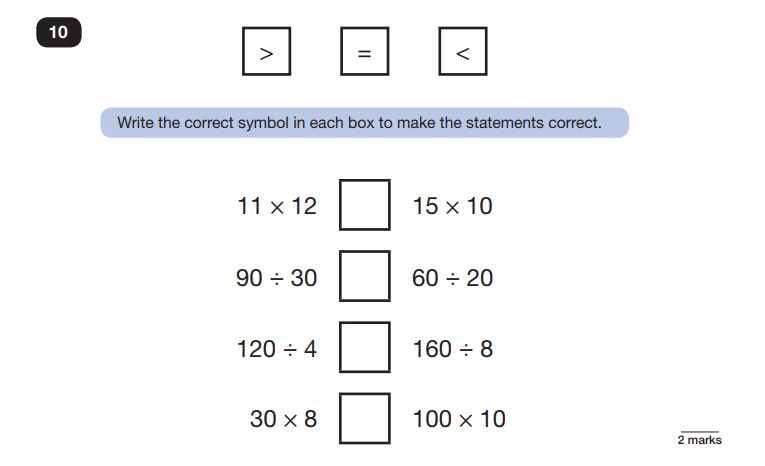
If pupils were truly fluent in their calculation skills, they would be able to compare the statements without actually completing each calculation, thus gaining themselves a relatively easy 2 marks in the process.
Whereas pupils who lacked true fluency would have resorted to calculating each statement. Whilst this may have ended up with them still gaining 2 marks, it would have eaten into their time more significantly, leading to them struggling to complete the paper in time. There are many other examples of this throughout the papers, including Paper 3 Question 19.
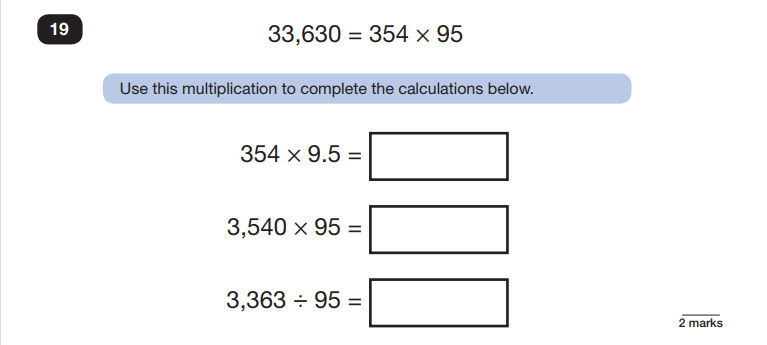
Again, with this question, if pupils understood the relationships between numbers they could complete this quickly. Whereas if they had to calculate each statement using a formal method, it would have taken much longer, and probably led to difficulties completing the paper in the time given.
This theme was even present in the Arithmetic paper. Question 15 was a good example of this
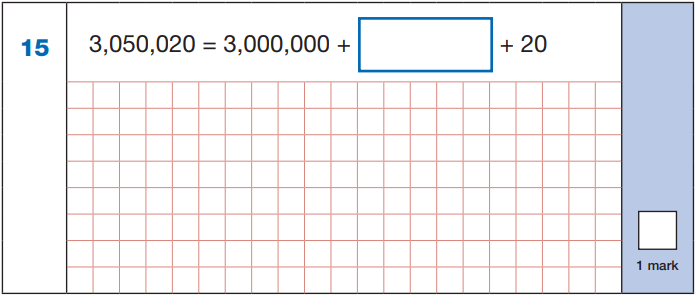
This relied on pupils’ fluent understand of place value. This question was one that pupils would either be able to complete very quickly, or one that would take significantly longer and eat into their time.
Even the last question in the paper had a ‘shortcut’ that pupils could take if they were truly fluent. Taking a moment to reflect before launching into the full long division algorithm, pupils noticing that 100 x 97 would get them close to ‘8827’ could save time by calculating 90 x 97. Having such poise at this late stage would have been a challenge for many.
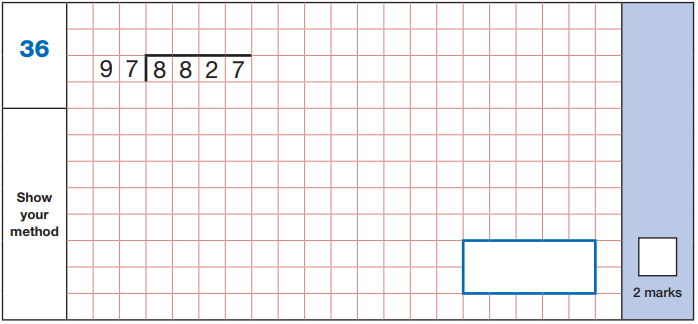
6. Arithmetic paper tested written and mental questions
As we’ve said before, the key to the Arithmetic paper is pupils identifying questions that could be carried out mentally (or with jottings) vs those that need a fuller written method.
If pupils do not correctly identify between the ‘mental’ and ‘written’ questions, they would likely have still struggled to complete the paper in time. However, those who identified the ‘mental’ questions should have easily been able to complete the full paper within 30 minutes.
The Arithmetic paper has been broadly similar in this regard since its introduction, so we can expect this to stay the same in future years. Since a high score on the Arithmetic test is a key indicator of pupils meeting the expected standard, it is important that this skill (which again links back to ‘true’ fluency,) becomes or remains part of your approach to Maths in Year 6.
Don’t miss our free resource called Fluent in Five specifically for this purpose. With downloads in the thousands, we’re pleased to say it’s been a huge success with schools and has helped thousands of pupils improve their arithmetic skills.
7. Possible to achieve expected standard without Year 6 content
We’ve said it before and we’ll say it again, they are not just Year 6 SATs. They test the full KS2 curriculum, and the test frameworks make it clear that over half of the marks each year will be drawn from the Year 3-5 content domain.
This means that (conversion tables pending) it is likely to be technically possible to get the raw score that equates to the magic ‘100’ without gaining any marks from the Year 6 content domain.
Now, we are not suggesting that you throw the Year 6 Maths curriculum out the window, but as part of your work in Year 6, it is important to ensure that key concepts are built upon and revised from previous years. Not only will this help pupils make connections between the different areas of Maths, but they will lose marks if they’re not up to speed on the earlier material.
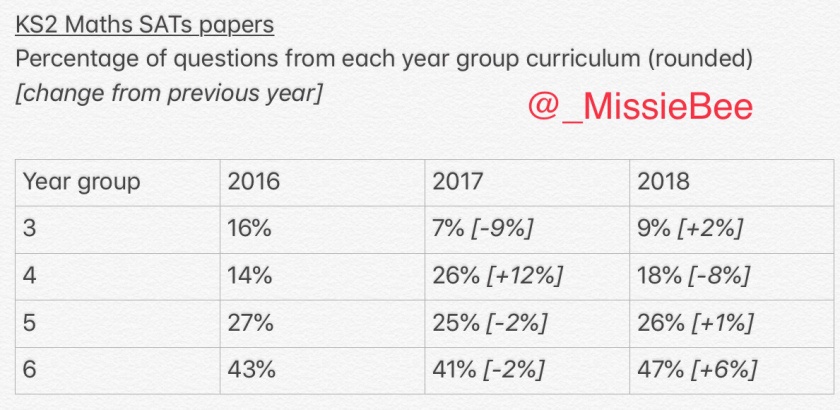
8. Three mark question is here to stay
As implied in the test framework, it is likely that a 3 mark question, a feature only introduced in the new style SATs papers, is likely to appear once each year in either Paper 2 or Paper 3.
These questions aren’t as ‘mean’ as they seem, and are easier for pupils to gain 1 mark in than the more common 2 mark questions.
Luckily the 3 mark question this year (Paper 2 Question 17) was simpler than in previous years.
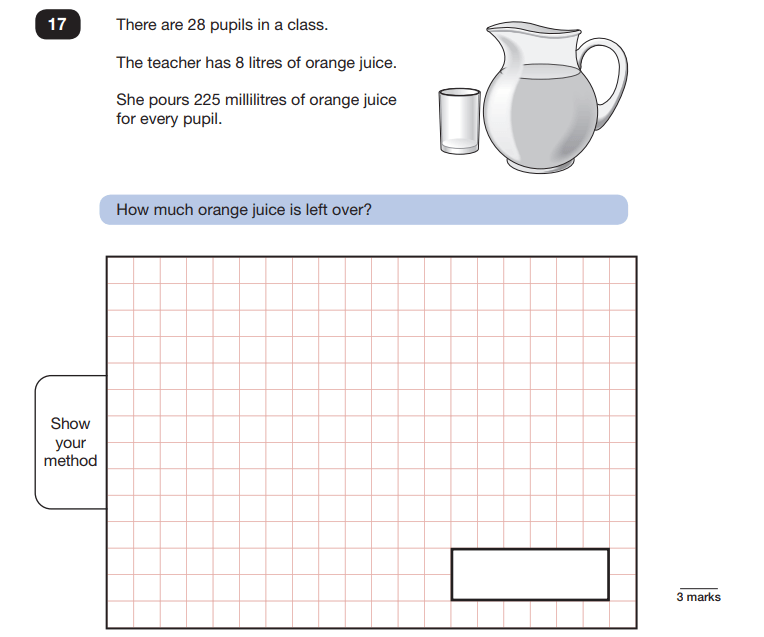
The identification of the calculations needed was relatively simple as long as pupil made the conversion from ml to L:
28 x 225ml – 6,300ml
8,000ml – 6,300ml = 1,700ml
The question could also have been answered by converting L to ml, as it worked either way round with both 1,700ml or 1.7L being acceptable answers.
9. Converting between units of measure is a key skill
As we saw above, converting between units of measure continues to be a skill that is tested throughout the 2018 Maths SATs Reasoning Papers.
Along with Paper 2 Question 17, it was also tested in Paper 3 Question 13.
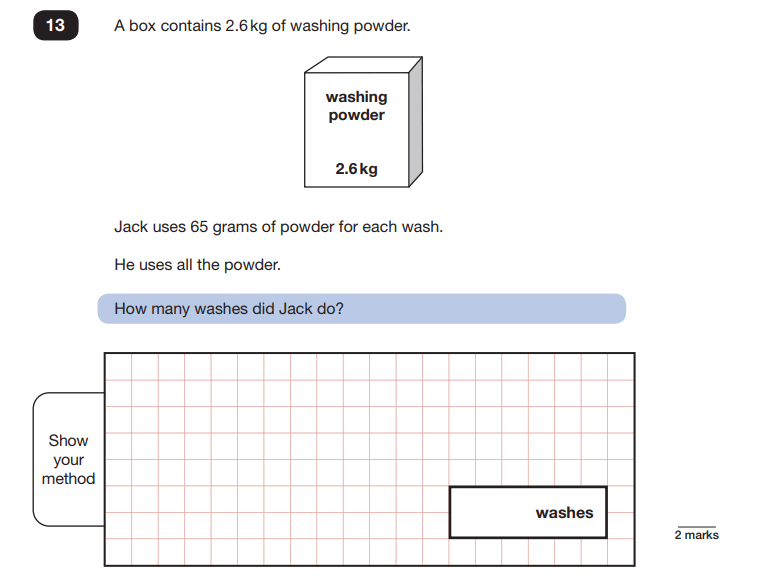
The mark scheme makes it clear that the conversion is required for even 1 mark to be awarded, so these are certainly key skills to master.
10. Old content presented in new ways
Some of the ‘core’ content that is likely to be tested each year received different contexts and ‘takes’ this year. For example, we saw the classic ‘how much of a book is left to read’ resurrected from the pre-2016 SATs in Paper 3 Question 16.
Examiners also took a different approach to algebra in Paper 2 Question 21, relying on pupils identifying the algebraic thinking and relationship present between the shapes.
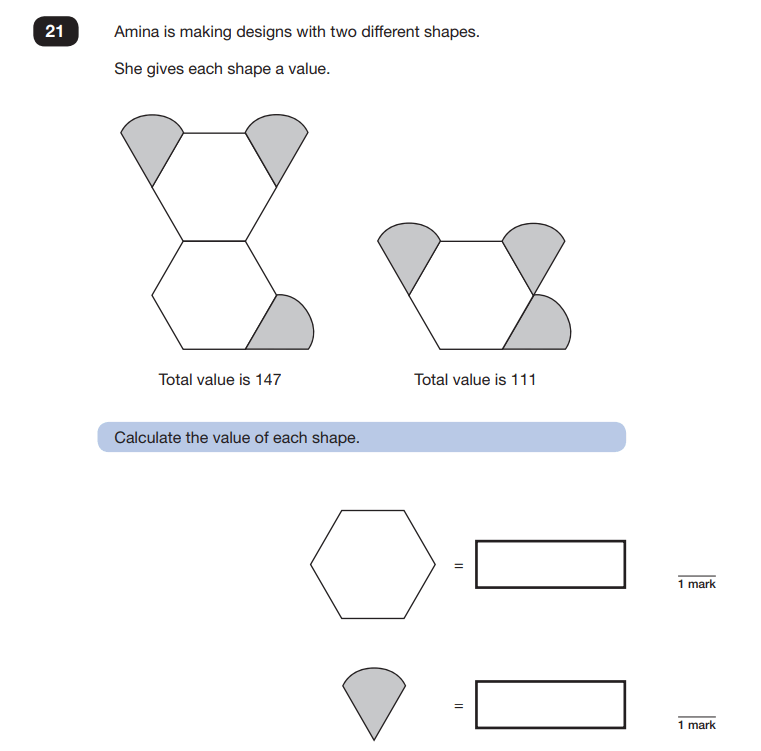
The content being tested in the KS2 SATs papers 2018 had been tested before in previous years, but the examiners simply put it in a slightly different context.
11. Some unfamiliar contexts
We couldn’t write a summary of the SATs papers without mentioning some of the more ‘unique’ contexts, that show that, despite their best efforts, it is still difficult to test the curriculum in truly ‘real life’ contexts that are applicable to all pupils.
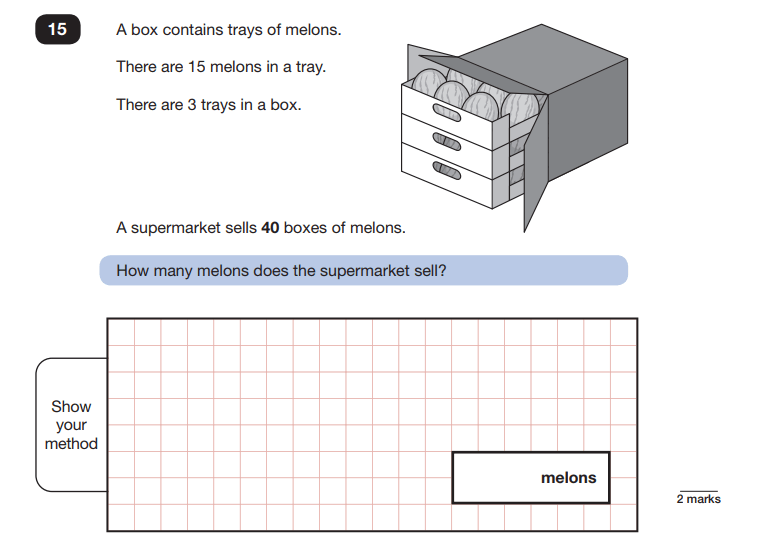
Who can forget the rather large order of melons from Paper 2 Question 15 (and more importantly who knew melons came in trays AND boxes?) There was also the brave examiner who decided to measure the length of the alligator’s nose and still managed to escape, fingers intact, to create Paper 2 Question 20.
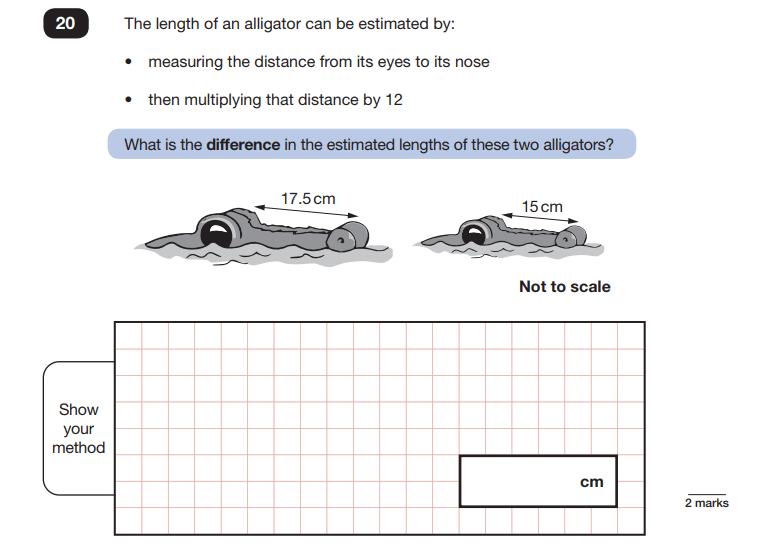
12. Resilience needed to succeed in reasoning
As in line with past SATs papers, pupils’ resilience and creativity continue to be ‘covertly’ tested. A lot of the questions this year relied on pupils finding the ‘in’ point, and once they found their way into the problem the Maths involved was, in many cases, fairly simple.
Looking to supercharge your KS2 Maths results? Learn more about our Free Trial for our 1-to-1 Maths Interventions!
Pupils needed to be resilient enough to continue searching for the ‘in point’ and not to be put off if they could not immediately identify how to solve the problem. A conceptual understanding of Maths also helped here, as did familiarity with structures such as the bar model.
13. Demanding visual cognitive domain
Pupils’ visualisation skills were tested in a number of questions this year, including in Paper 2 Question 11, Paper 2 Question 21, Paper 3 Question 17 and, of course, the rather tricky Paper 2 Question 22.
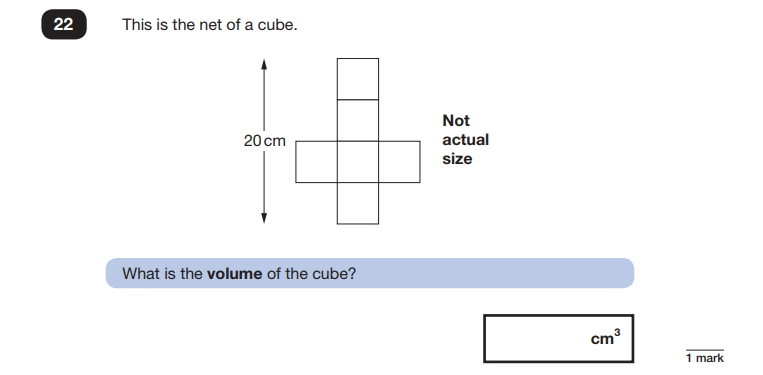
This question relied on pupils being able to visualise the completed cube, and therefore work out the dimensions of the cube based on the measurement given in order to work out the volume. This was certainly the toughest single mark question across both papers.
However, the focus on visualisation is probably due to the fact that there wasn’t a major focus on it in either the 2016 or 2017 papers, so the jury is still out on whether this skill will receive the same profile in the 2019 papers.
14. Most challenging questions saved until last
As to be expected with the ‘taper’ in difficulty that we discussed earlier, the last 3 questions on each Reasoning Paper were certainly the most challenging.
However, these questions did sit within the test framework, and combined Year 5 or Year 6 content with a high ‘score’ on the cognitive domain. This basically meant that the content and the presentation and/or method of answering were both designed to be challenging.
The best way to prepare your pupils for the difficult questions that can come up is with practise, so take a look at our 6 Free SATs Papers and get a host of top quality SATs style questions for your class.
15. Surprise omissions and areas yet to be covered
Most of the content domain strands have now been covered at some point in the 2016, 2017 and 2018 KS2 SATs papers. However, there is one notable exception.
There has yet to be an algebra question that relates to finding all possibilities.
There has also yet to be a proper order of operations question in the Reasoning papers.
Area and perimeter didn’t make a ‘proper’ appearance this year (with the notion of area only mentioned in Paper 3 question 18) so we can expect this to be something that will appear in future papers.
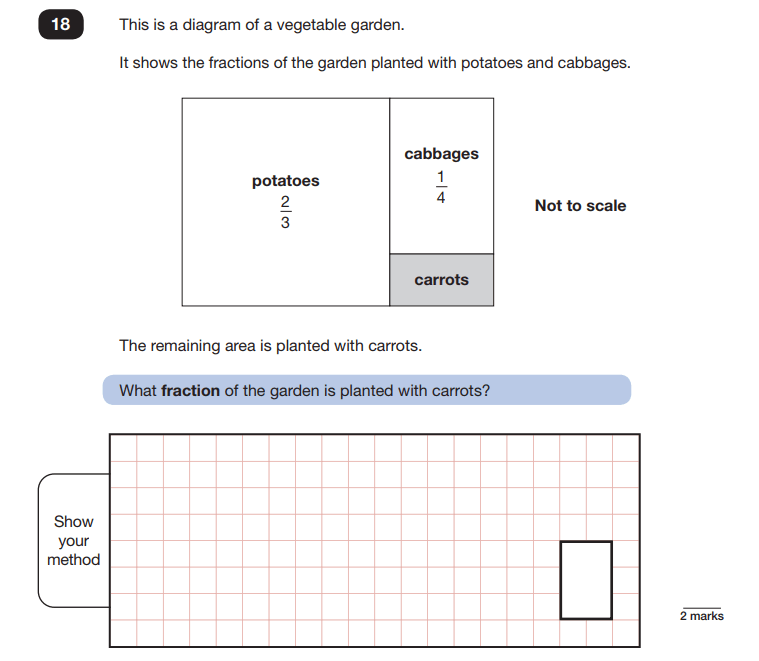
We can also expect to see the ‘re-testing’ of some of the other ‘infrequent’ areas, so questions on the properties of circles, 2D shapes or analogue clocks could make a reappearance in more recent papers. Who knows, everyone favourite- roman numerals may also reappear- but don’t worry, this will only ever be a one mark question due to the way the test framework is constructed!
Relax, SATs are over for another year!
So, there we have it, our 15 point guide to some of the key learning taken from the national assessments in 2018. We’ll be back with more when the results and conversion tables are out, when we will be unpicking what this tells us about the achievement of pupils across the country, and what areas of maths remain key in light of the raw score conversions for this year’s papers.
Now read:
KS2 SATs 2022: Maths Papers Question Breakdown
KS2 SATS Results 2018: How to look at the data and plan your next steps
KS2 SATs 2017 Question Breakdown for Maths
KS2 SATS 2016 Question Breakdown for Maths
6 Free SATs Maths Papers To Prepare Your Year 6 For SATs
Your FREE One Stop Shop For SATs Papers
The Best Year 6 SATs Practice Papers: Available As Free Downloads
Standardised Scores: What Do They Mean?
If you are looking for more support for any of your KS2 pupils in maths – our expert maths tuition has transformed confidence and attitude to maths for thousands of pupils every year. We will share the impact on SATs results when they’re out. Till then you can take a look at the 1-to-1 interventions we are now offering schools for September.
DO YOU HAVE STUDENTS WHO NEED MORE SUPPORT IN MATHS?
Skye – our AI maths tutor built by teachers – gives students personalised one-to-one lessons that address learning gaps and build confidence.
Since 2013 we’ve taught over 2 million hours of maths lessons to more than 170,000 students to help them become fluent, able mathematicians.
Explore our AI maths tutoring or find out about year 6 sats for your school.
